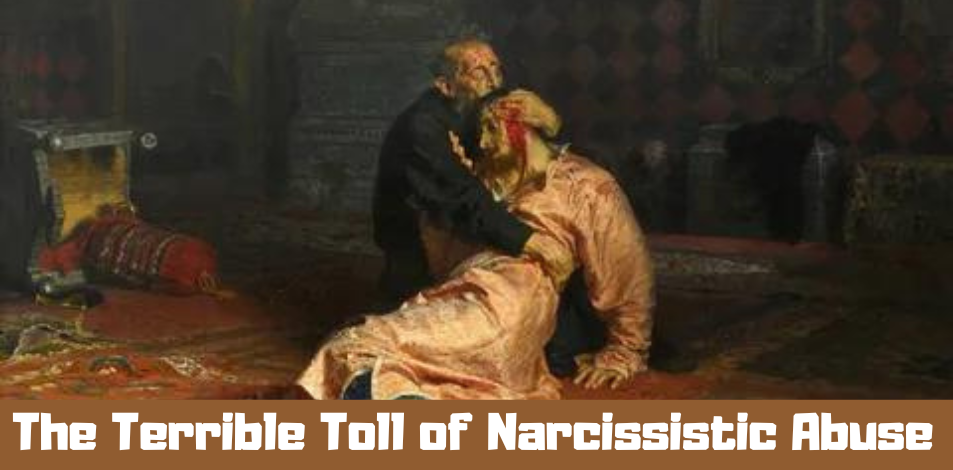
As social media has made us all “stars” of our online profiles, narcissistic behaviors have naturally been given more space to permeate and hog the limelight. While diagnosable narcissistic personality disorder is found in less than 5% of the population, controlling behaviors are increasingly common, driven by an inflated sense of self; a relentless drive to appear successful, powerful, and superior to others; feelings of entitlement in all aspects of life; vanity; and selfish behaviors.
While we can all love a winner, two dangerous aspects of narcissism include an absolute lack of empathy or concern for others and a willingness to ruthlessly use others to further one’s own desires. Some experts suggest that narcissism may stem from childhood trauma due to abusive early relationships, from childhood hypersensitivity, from genetics, or simply from random factors in one’s personality or temperament. Regardless of the origin, the damage that narcissism can do typically targets the people in one’s life who are most needed to feed their narcissistic appetite.
Rather than being driven by a desire to bolster low self-esteem, narcissists are more likely to use manipulation and coercion to maintain their overly high self-image when faced with inadequate praise and adulation from others (Vicky, 2019). Narcissists believe they are more than they are and become angry when others do not “appropriately” respond to this inflated sense of self. Because narcissists lack empathy or concern for others, their narcissistic rage when treated with less than they feel is their due respect can be painful.
NarcissisticAbuse
Emotional abuse by a partner is cyclical and predictable for narcissists. Physical abuse may or may not be present, but psychological abuse alone can lead to PTSD.
While narcissists lack basic empathy for others, their ability to seek out potential targets is surprisingly powerful. Narcissists tend to seek out partners who are sympathetic to them and can be effectively seduced by flattery, attention, and displays of affection: they love someone they can engulf in a whirlwind romance. We all fall in love with the expectations we have of a potential partner, but in the case of narcissists, the expectations are more fantastical because narcissists are experts at pretending to be what we want a partner to be.
Once they fall in love with a partner, the honeymoon only lasts as long as it takes for the relationship to take hold. Narcissists choose partners who allow them to maintain their sense of superiority. Lacking empathy, they view people as either tools to be used or obstacles to be overcome.
Tools to be used: Narcissists may choose to ally themselves with a partner who has a powerful status to elevate the narcissist’s status or standing among others. They will use the partner as a means to move in the “right” circles or gain the admiration or acceptance of others. The relationship lacks mutuality and intimacy because these qualities are not provided by the narcissist. However, the partner provides access to the ego-supporting supply that narcissists crave.
Obstacles to be overcome: When the partner no longer offers entry into rarefied circles or access to status bumps, or his or her assistance is no longer needed, narcissists continue the cycle of abuse that began early with duplicitous displays of affection and commitment. Narcissists verbally abuse partners through condescension, insults, degrading comments, and ignoring their comments (Vicki, 2019). This may start in private but can be made public, albeit with a more insidious use of innuendo and humiliation. By tearing down a partner, the narcissist is asserting their superiority.
SelfManipulation
Self-manipulation is achieved by manipulating a partner’s psychological balance by making them question whether they actually know what is happening around them. Narcissists may share information or plans with their partner, but when their partner asks them how the event ended, the narcissist may completely deny that they ever said the event would have happened. The narcissist will deliberately play with their partner by denying obvious facts and making up stories designed to make the partner question their sanity.
Surrender
Once the victim begins to question their grip on reality, they need to move quickly to get out of the relationship before any further damage is done. When a relationship is jeopardizing your safety and sense of self, it’s time to leave.
While we all like to believe that the person we care about most cares about us, relationships with narcissists inevitably end badly. Not only do narcissists not care about other people’s feelings, they also have no feelings or substance to offer their partner—leaving partners feeling deprived, alone, and hurt beyond words. Allow yourself to heal by preparing and detaching. Don’t try to convince yourself that the narcissist will change. Don’t try to justify the abuse you suffered as “deserved” because it’s less than what your partner wanted. Don’t minimize the pain you’ve experienced by saying it was “just words.” Don’t repeat your partner’s manipulation by trying to convince yourself that what you know happened is probably just your faulty memory. Don’t leave without adequate preparation: Whether it’s making copies of important documents or putting money where only you can access it, take every precaution to make your exit permanent. Log out of online accounts, from email to social media to financial sites. Update all your passwords on a device the narcissist can’t access. If you have children, consult an attorney before leaving.
When a relationship ends, we need supportive people around us. Let caring others help you in the ways that matter—with kindness, support, trust, and intimacy. Recovery isn’t always smooth, especially when narcissists try to re-insert themselves into others’ lives. Block their number, send them messages or gifts, and leave behind any reminders or mementos of your time together. Seek professional help if you feel overwhelmed by the situation. Learning to trust yourself again is often a challenge, so be patient with the healing process.




